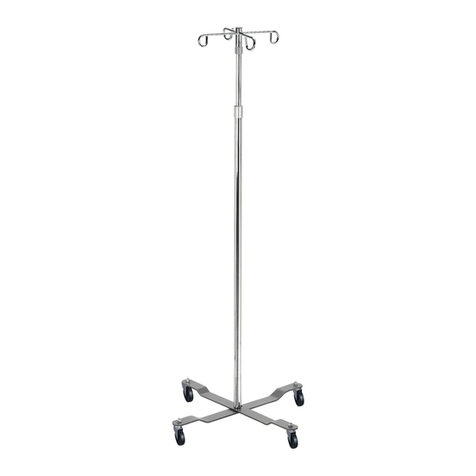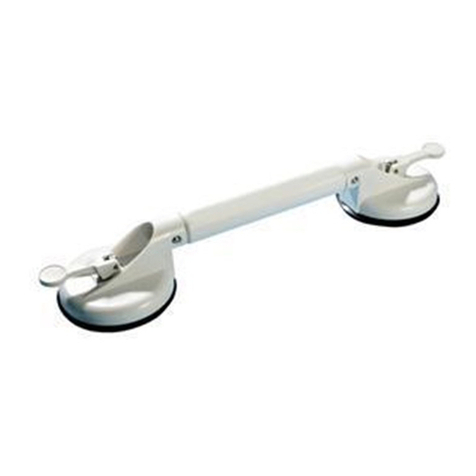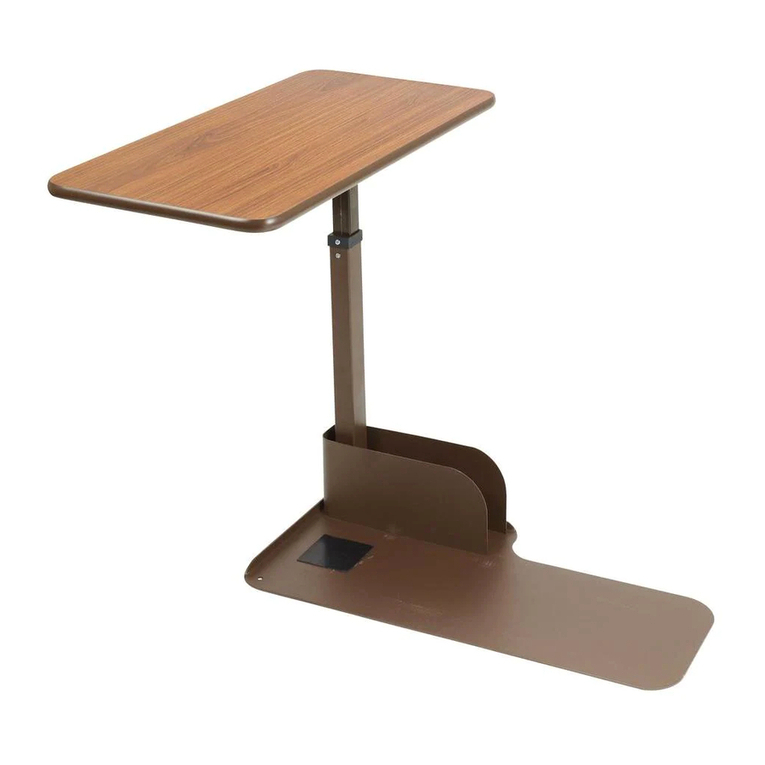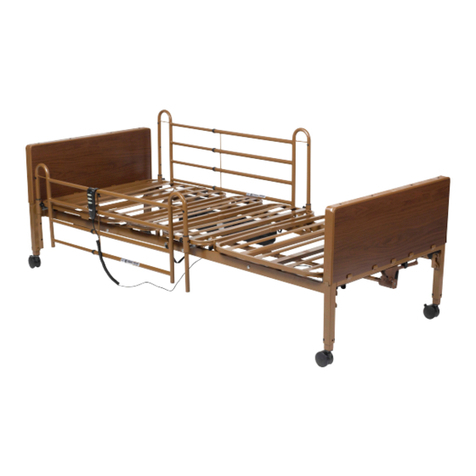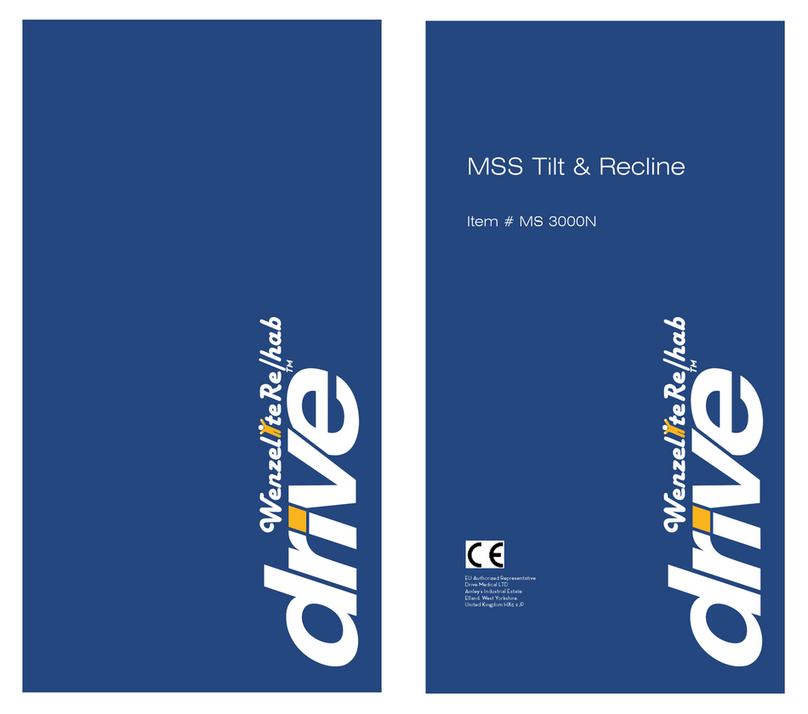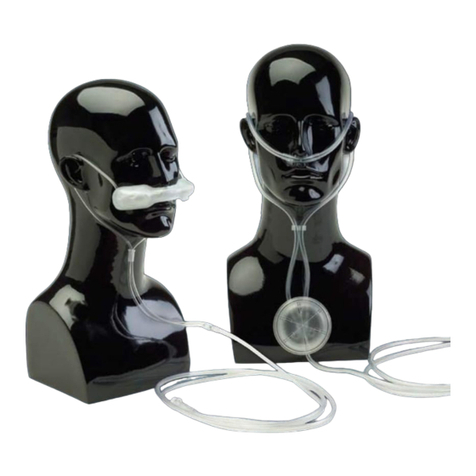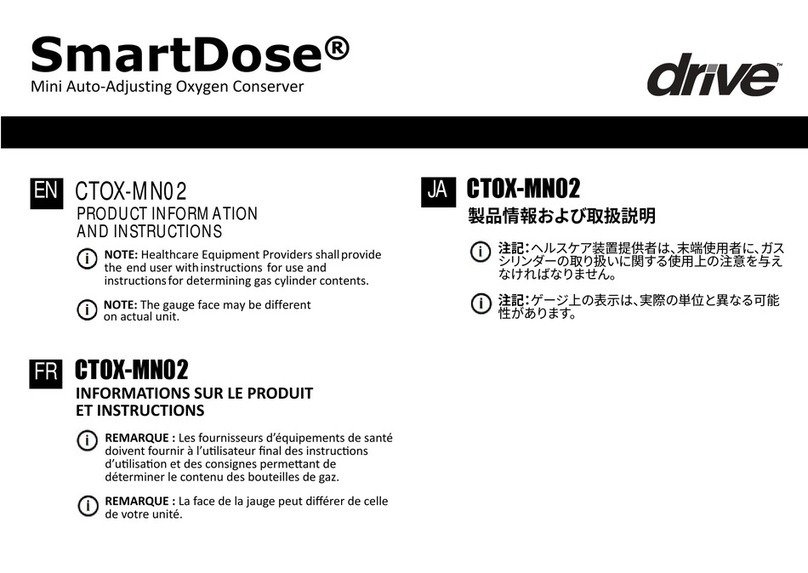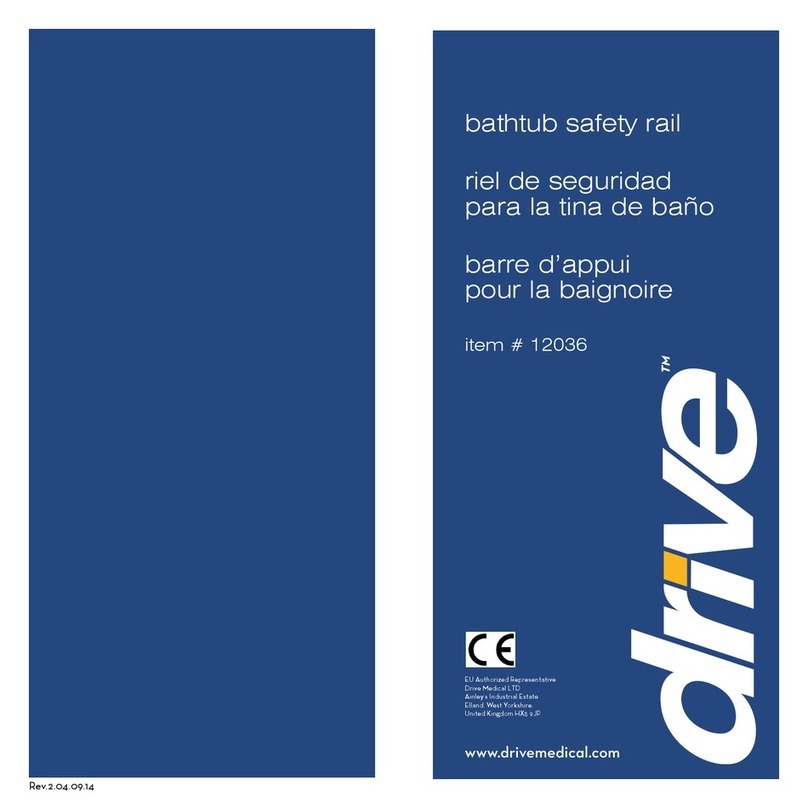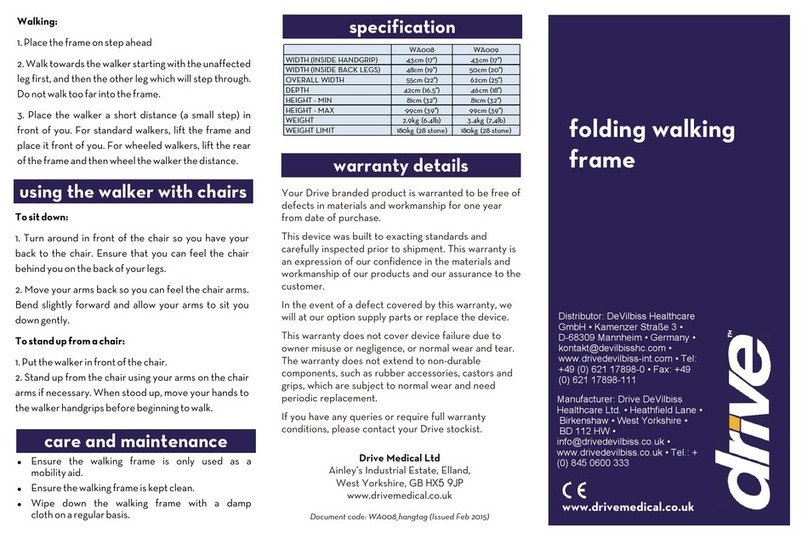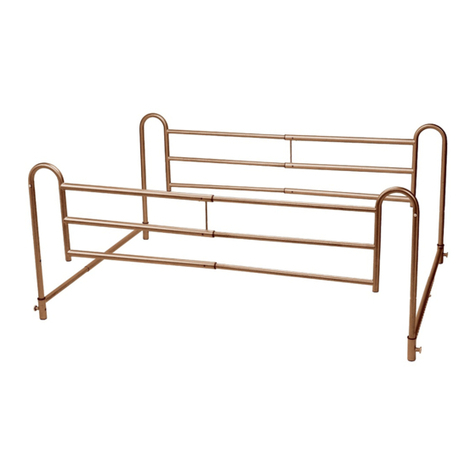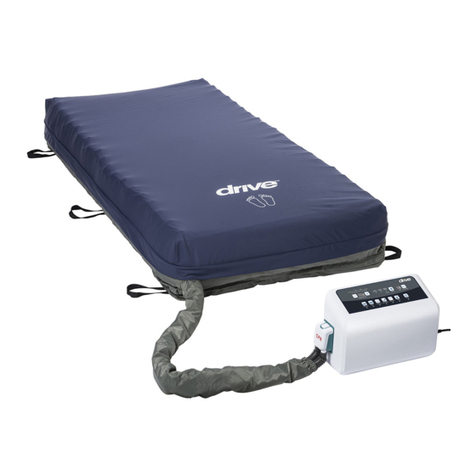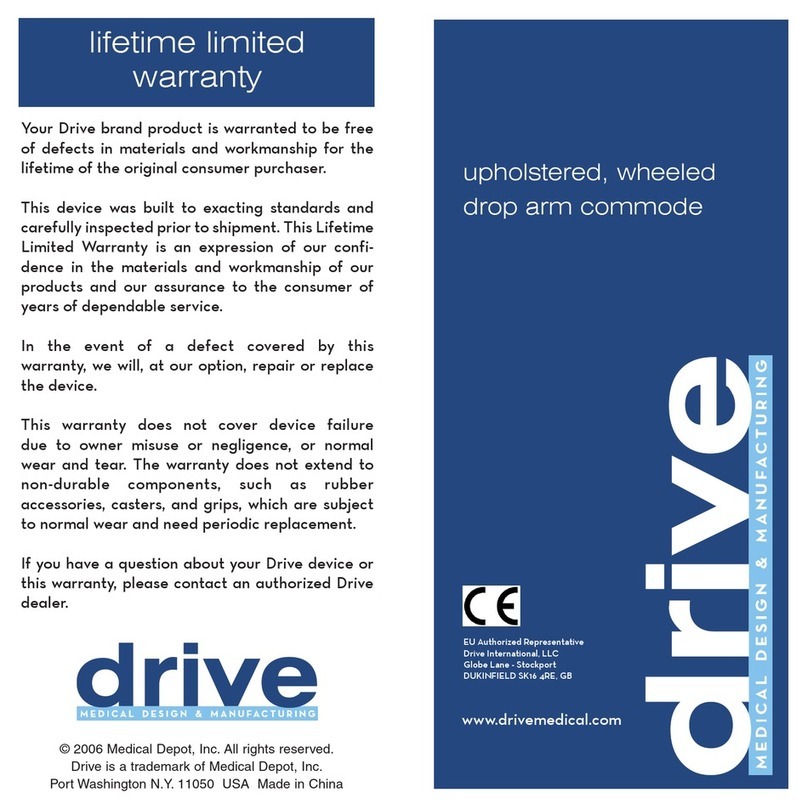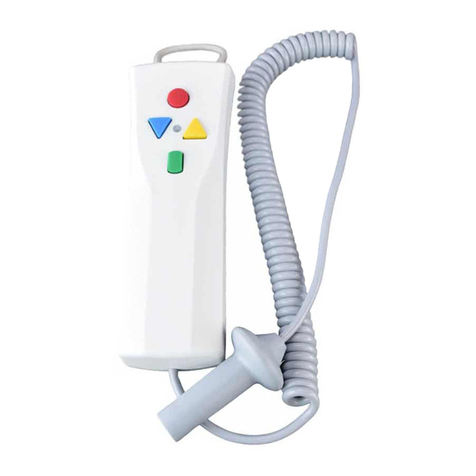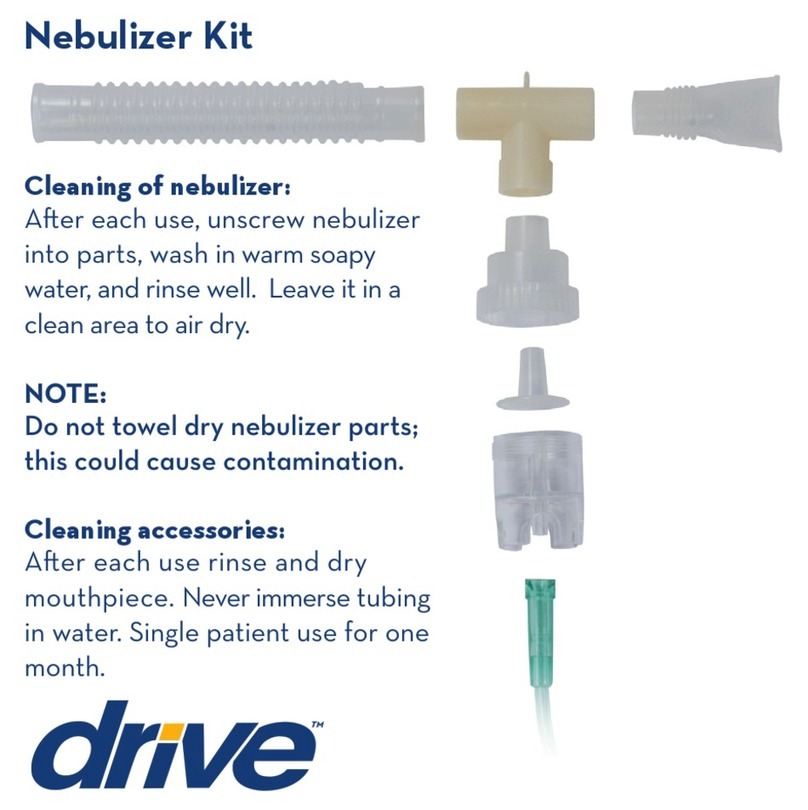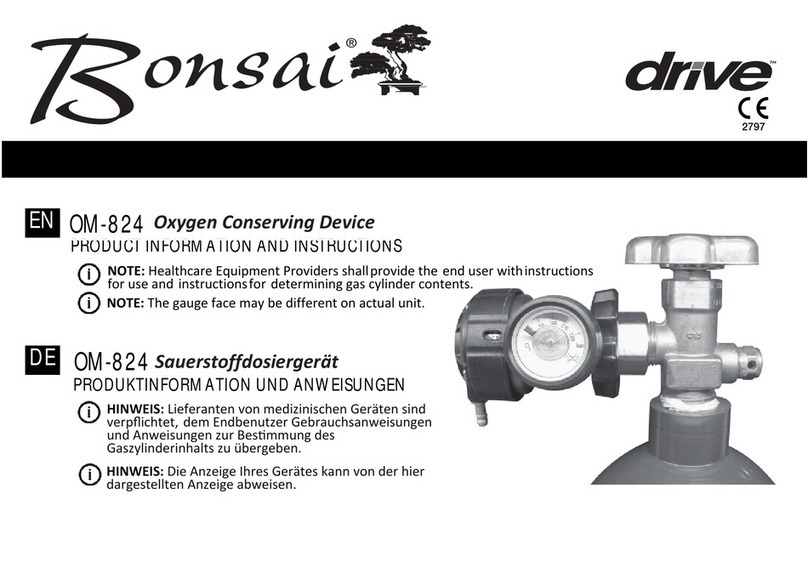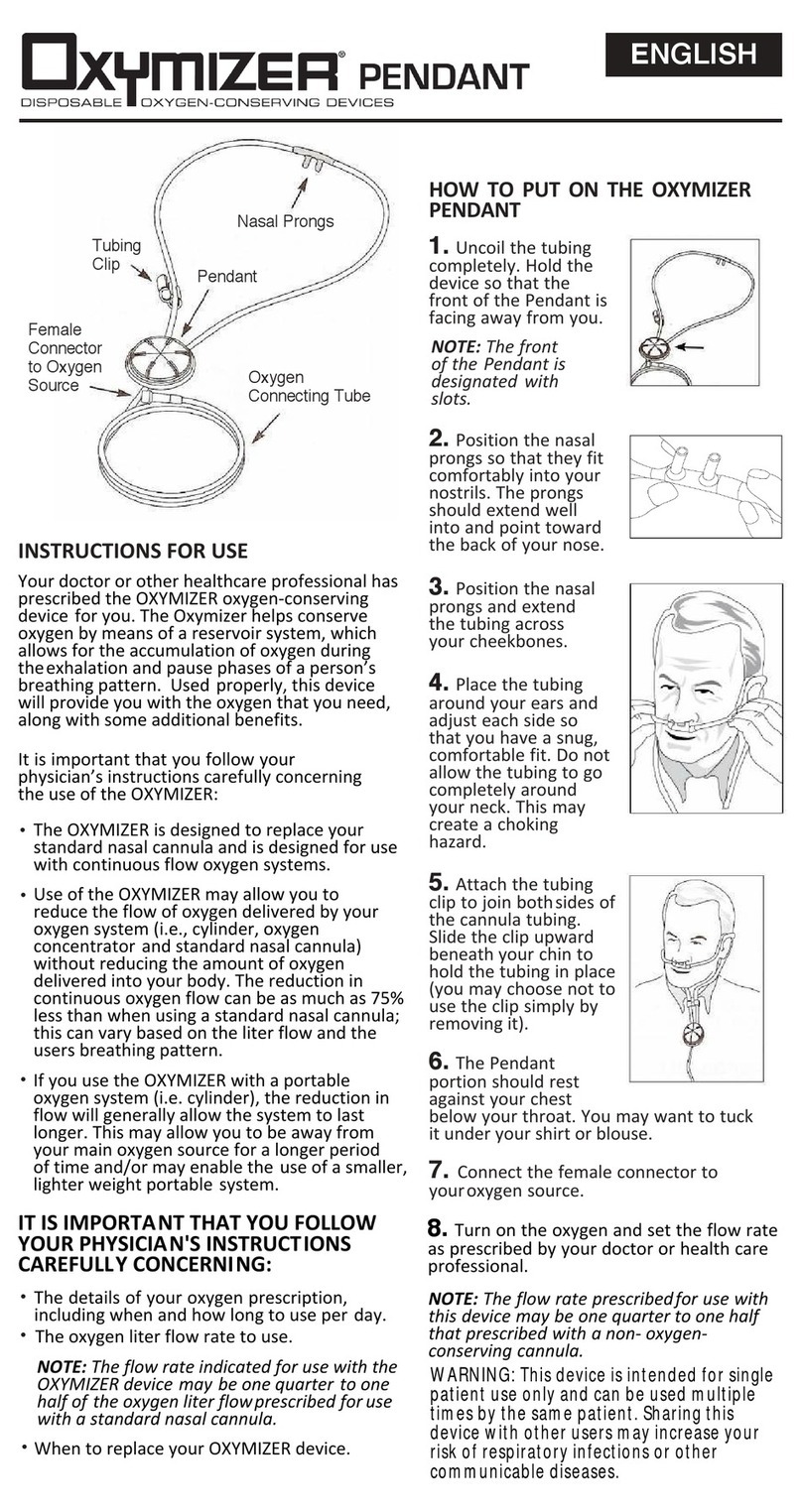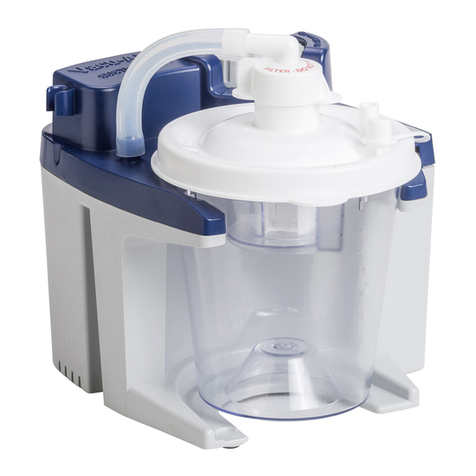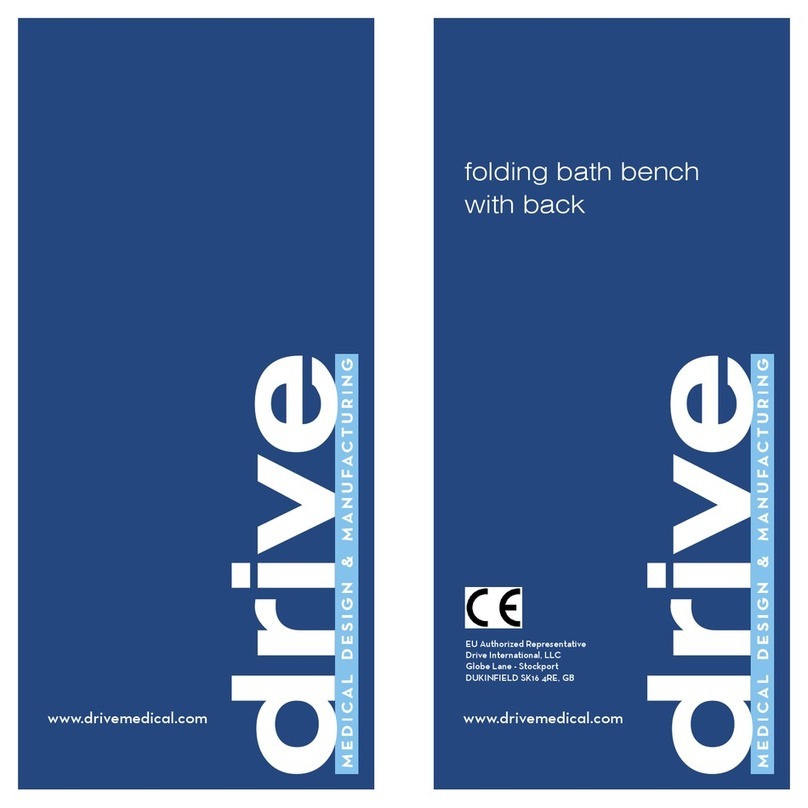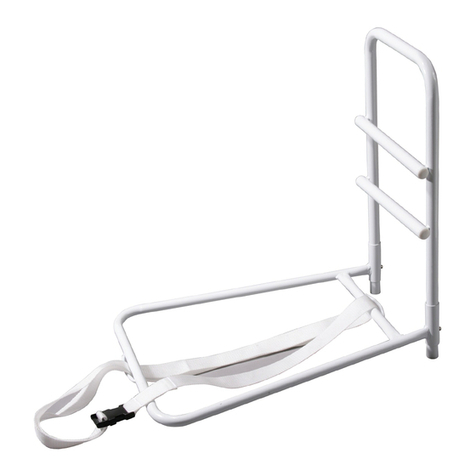
HOWTOFOLDSLING
STEP 1 STEP 2
TRANSFERTOBED
1. Raise lift until patients buttocks are above the surface of
the bed. You may need to lower height. If patient cannot be
lifted above bed, DO NOT push or pull patient onto bed.
This can result in a tip over and serious injury to the patient
and attendant.
2. Move lift so that open end of U-base is as far under bed as
possible.
3. After patient has been centered on bed, rotate patient to
face the foot of the bed.
4. Carefully lower patient onto bed.
TRANSPORTINGPATIENTSINLIFT
If transporting over a short distance, ensure that patient is
facing attendant and keep patient as low as possible so that
patients feet rest on the base of the lift straddling the mast.
Lower center of gravity reduces the risk of tipping over.
DO NOT transport patients on shag or deep carpeting,
thresholds, unpaved surfaces, outdoors or any other
obstructions.
WARNINGLIFTSAREPRIMARILYATRANSFERDEVICENOT
ATRANSPORTATIONDEVICE
3. Lean patient forward and place patient’s hands on their
knees for stability. Standing in front of the patient, put the
folded sling behind the patient’s back and press it down until
it touches the seat of the chair.
4. The leg sections of the sling are pulled forward and beneath
the patient’s thighs by the long loops. The loops are then
crossed.
5. Move lift base around chair and under legrests with
patient’s feet straddling the mast. Lock wheel locks on the
wheelchair and raise patient above seat height. Make sure
footrests are in up position.
TRANSFERFROMWHEELCHAIRORCHAIR
(follow steps 1 & 2 for folding)
TRANSFERTOWHEELCHAIRORCHAIR
1. Position lift so that the patients as far back in chair
as possible. Always be sure to lock wheelchair wheel locks, if
transferring to a wheelchair.
2. Lower patient slowly into chair.
3. To position, push gently on the knees of patient with your
right or left hand while simultaneously lowering patient into
chair.
4. Another alternative for positioning patients further back
into chair:
a. Raise sling so that patient is just touching the seat.
b. Pull up on the top and back of sling with left hand.
c. Complete lowering patient into chair.
d. Raise patient and repeat steps B-C if necessary.
5. Unhook sling from cradle or chains or straps from sling.
REMOVINGSLINGFROMUNDERPATIENT
1. Remove armrest from chair if possible. Disconnect sling
from lift.
2. Stand in front of patient, lean forward and place patient’s
hands on patient’s knees for stability. Pull sling flaps to the
side, out from under patients thighs.
3. Still standing in front of patient, reach back and pull U-Sling
up from behind patient. Reposition patient back into chair.
WARNINGPULLINGSHARPLYONSLINGMAYCAUSE
PATIENTTOFALLFORWARDRESULTINGININJURY
ALWAYSSTANDINFRONTOFPATIENTWHENPLACING
ORREMOVINGTHESLING
WHEELCHAIRTOCARTRANSFER
NOTE: Use 3 or 4-inch casters for cars with a low clearance
1. Remove armrest from chair if possible. Disconnect sling
from lift.
2. Check beneath car for lift base clearance before attempting
transfer.
3. Lock wheel locks on the wheelchair. Widen adjustable base
of lift for stability. Raise patient from wheelchair. Make
certain car seat is close to level with the knees.
4. Move patient to car, using steering handle to push. Approach
car with patient’s head, continue to move lift toward car
until patient’s head is inside car. Raise lift as required until
patient is clear of car seat. Be sure to protect
patient’s head.
6. Lift patient’s legs into car and rotate person to face front
of car.
7. Slowly lower person into car until there is slack in the sling
straps.
8. Remove chain or straps. Patient may remain seated
on sling.
9. Lift may now be dismantled and placed in car trunk or
back seat.
CARTOWHEELCHAIRTRANSFER
1. Adjust seat and slings to proper point of adjustment and
connect to cradle.
2. Widen adjustable base of lift for stability.
3. Raise lift until chains or straps are taut and patient’s
buttocks are above car seat surface.
4. Swivel patient until his/her legs are outside of car. Lift up on
legs, tilting head backwards as lift is moved away from car.
5. Lock wheel locks on the wheelchair. Lower patient into
wheelchair.
LIFTINGPATIENTFROMFLOOR
1. Position lift behind the patient with a pillow over the base to
support patient’s head and neck. Lift should be positioned
with the lift arm centered over patient.
2. Lower cradle so that chains or straps reach hooks of sling
or cradle.
3. Raise patient’s knee and attach sling.
4. Lift patient up above the floor. Turn patient to face attendant
and place patient’s feet on the base of the lift straddling the
mast for extra stability.
LOWERINGPATIENTTOFLOOR
1. Place pillow on base and support and support patient’s
legs.
2. Lower patient down to floor.
